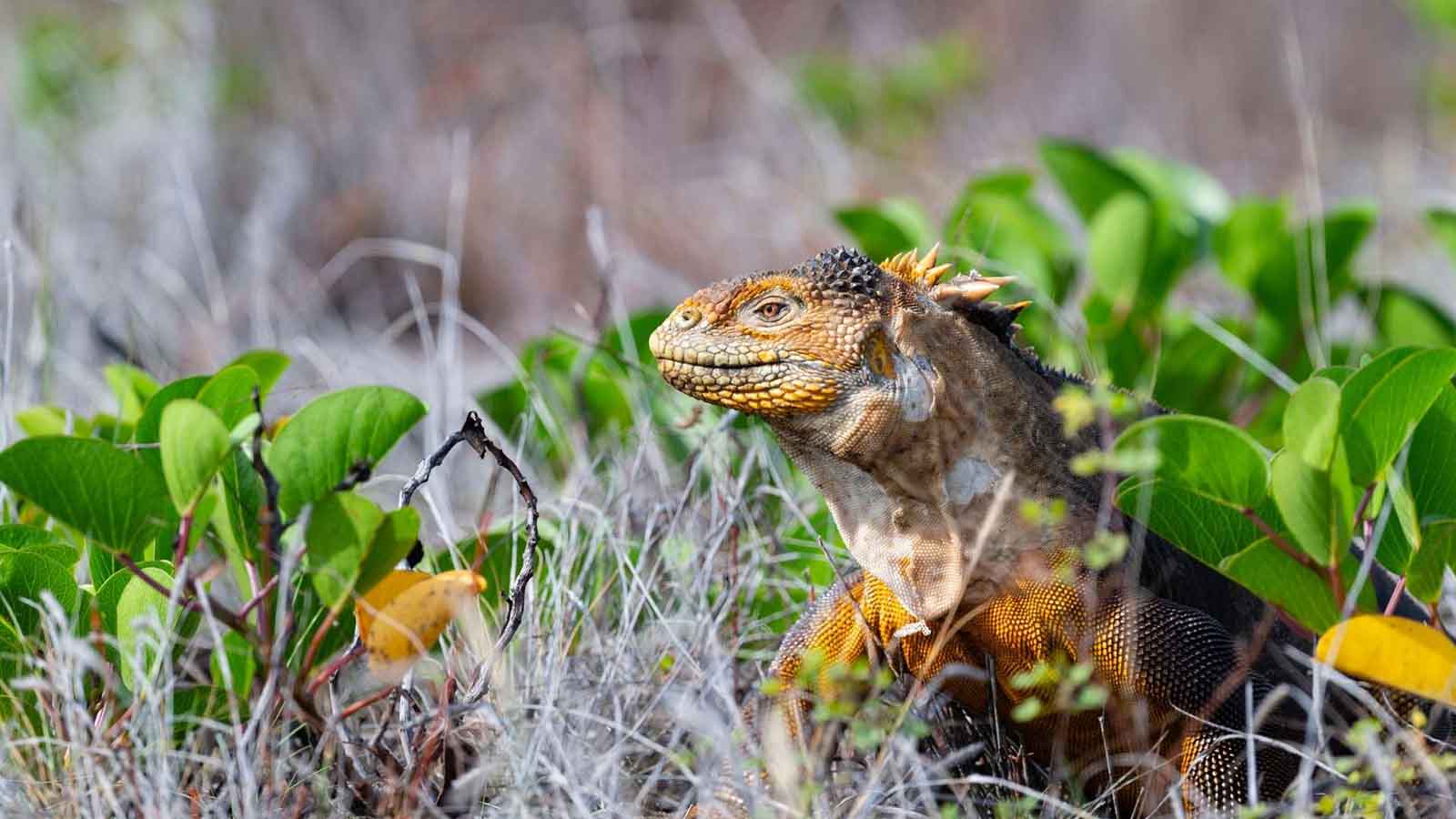A small uplifted island just off the northeast coast of Santa Cruz. The island's low-lying landscape is covered with colorful saltbush, scrub, and giant prickly pear cactus. A subspecies of land iguana is found on the island in plentiful abundance and sometimes can be seen munching on the cactus. The southern cliffs are steep and rocky, and home to numerous seabirds as well as a bachelor colony of sea lions. Looking down into the clear blue waters, schools of surgeonfish swim by as birds shoot in and out of the holes in the cliff. A short hike and Zodiac ride provide ample opportunity to observe the beauty and wildlife of the island
The visit at Santa Fe begins with a wet landing on the small beach in Barrington Bay on the northeast side of the island. Large numbers of sea lions are found on the beaches and can often be seen surfing in the waves. Some of the island’s endemic species include massive Santa Fe Opuntia cactus, the Galapagos hawk, Galapagos snake, rice rats, different types of finches, and the Galapagos mockingbird. The visit includes a hike past saltbush where Galapagos hawks as well as the Santa Fe land iguanas tend to roam.


